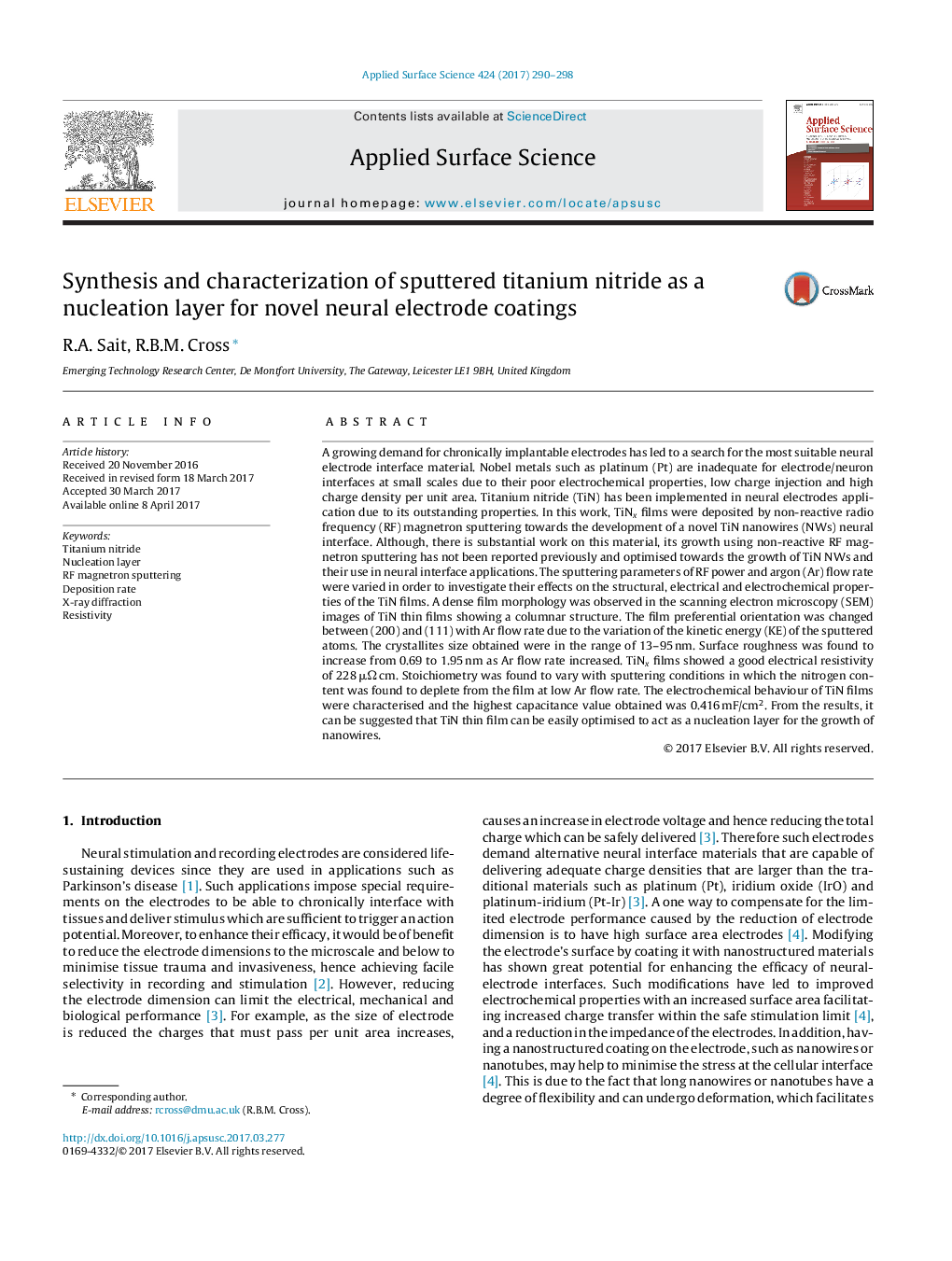| کد مقاله | کد نشریه | سال انتشار | مقاله انگلیسی | نسخه تمام متن |
|---|---|---|---|---|
| 5351287 | 1388133 | 2017 | 9 صفحه PDF | دانلود رایگان |
- The (111) orientation only forms within a narrow band with (200) more dominant elsewhere.
- Nitrogen atoms were found to deplete with low Ar flow rate (10Â sccm).
- Resistivity was found to increase at low Ar flow rate.
- A resistivity value of 228 μΩ cm was achieved..
- The highest capacitance value was 0.416Â mF/cm2.
- TiN thin film can be tuned structurally and electrochemically to be well suited for the growth of TiN nanowires.
A growing demand for chronically implantable electrodes has led to a search for the most suitable neural electrode interface material. Nobel metals such as platinum (Pt) are inadequate for electrode/neuron interfaces at small scales due to their poor electrochemical properties, low charge injection and high charge density per unit area. Titanium nitride (TiN) has been implemented in neural electrodes application due to its outstanding properties. In this work, TiNx films were deposited by non-reactive radio frequency (RF) magnetron sputtering towards the development of a novel TiN nanowires (NWs) neural interface. Although, there is substantial work on this material, its growth using non-reactive RF magnetron sputtering has not been reported previously and optimised towards the growth of TiN NWs and their use in neural interface applications. The sputtering parameters of RF power and argon (Ar) flow rate were varied in order to investigate their effects on the structural, electrical and electrochemical properties of the TiN films. A dense film morphology was observed in the scanning electron microscopy (SEM) images of TiN thin films showing a columnar structure. The film preferential orientation was changed between (200) and (111) with Ar flow rate due to the variation of the kinetic energy (KE) of the sputtered atoms. The crystallites size obtained were in the range of 13-95 nm. Surface roughness was found to increase from 0.69 to 1.95 nm as Ar flow rate increased. TiNx films showed a good electrical resistivity of 228 μΩ cm. Stoichiometry was found to vary with sputtering conditions in which the nitrogen content was found to deplete from the film at low Ar flow rate. The electrochemical behaviour of TiN films were characterised and the highest capacitance value obtained was 0.416 mF/cm2. From the results, it can be suggested that TiN thin film can be easily optimised to act as a nucleation layer for the growth of nanowires.
Journal: Applied Surface Science - Volume 424, Part 3, 1 December 2017, Pages 290-298
